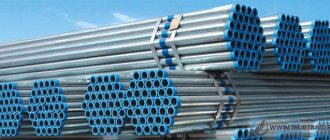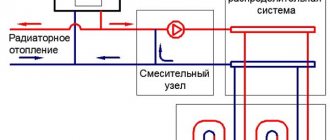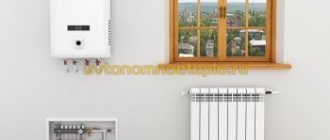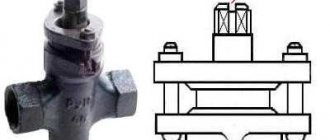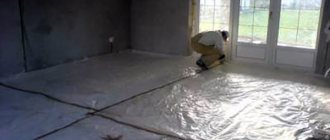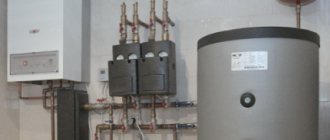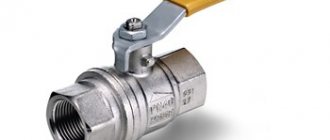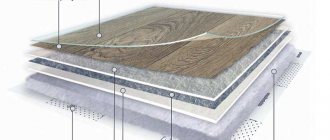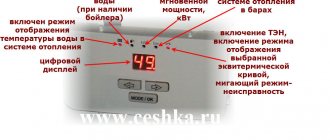One of the controversial issues in renovation is the dilemma of whether a warm floor is needed in an ordinary apartment?
After all, it would seem that central heating should be more than enough. Why waste money and fence something unnecessary. As it turns out, this type of heating is really needed. You just need to clearly know where exactly and in what specific areas to lay it.
By and large, a warm floor is not at all what it is commonly thought to be. In professional construction, a warm floor is a rough covering separated from a cold base using one or more layers of insulation.

For example, a real heated floor in any of your rooms can be divided into three main components:
- bars
- mineral wool
- chipboard layer

Moreover, if you lay a heating cable or infrared film between the chipboard and the finished floor, in this case they will only serve as heating.
But for most of us, this particular association has already taken root in our minds - hot water tubes or heating cable + screed or tiles.
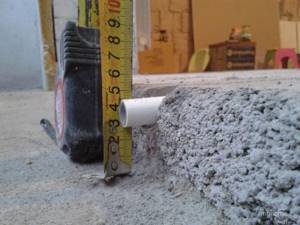
We are accustomed to calling this design a warm floor. Therefore, we will not deviate from the names that are familiar to everyone.
There are three main rules when you simply need heated floors in an ordinary apartment. Let's take a closer look at each of them.
Radiators and heated floors
Rule #1
If it is possible to replace conventional radiators with heated floors of the same type, make the most of this opportunity.
Just pay attention to the phrase “ there is an opportunity .”
If you live in a standard apartment on a certain floor, then neither the neighbors nor the rules will allow you to replace the usual batteries with a water floor. This is prohibited by SNiP.

You will have to make either infrared or lay a heating cable or mats.
There are only two main reasons for the ban:
- such a floor is not allowed to be embedded in a central heating system
- and it should not be placed above any living quarters that are below you

But if you live on the ground floor, and no one lives below you and there are no electrical rooms, then go ahead. The same applies if you have a private home.
In all these cases, water floors will outperform radiators in all respects.
- Firstly, such heating has much better energy efficiency

This means that it can heat a larger area using less energy.
- Secondly, a warm floor evenly warms the air throughout the entire volume of the room. But the batteries heat the air only in their vicinity.

- Thirdly, when heating devices are not visible, because they simply are not there, all rooms look much more aesthetically pleasing and beautiful
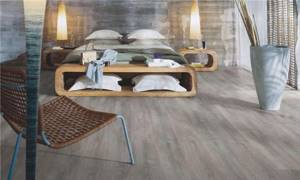
- Fourthly, it makes cleaning easier and there are no interfering batteries, pipes, outlets, etc.

Well, the most important thing is comfort. All radiators heat the air from the sides and above them. At the same time, the floor itself, including under the radiators, remains cold.
With radiators, you will move on a cold floor with temperatures up to 19 degrees, and your head will be located in a zone where it is more than 25 degrees. It’s impossible to call these comfortable conditions.

Of course, you can, as they say, fry the batteries to the maximum, but still you and your children will be forced to walk around the rooms in slippers.

More details
At the same time, you can forget about comfortable sleep in such a room. Moreover, even during the day it will not be entirely comfortable to be in it.
- first of all, it's too hot
- secondly, the air will be dry

But when the heating rises from below, from the floor itself, then much less temperature is required to warm up the entire room. This proves its effectiveness over other heat sources of the same type.
Thus, we can summarize the main conclusion of all of the above:
- water heated floor - better than standard radiators

- heating mats or cables are more effective than oil radiator batteries

- infrared floor - better than infrared heaters
Device technology

Preparatory work
The surface of the base is leveled taking into account the fact that the permissible height difference is about 5 mm. Otherwise, there will be a need for additional screed. Completely remove debris and seal cracks and cracks with cement.
Next, a thermal insulation layer with a thickness of at least 30 mm is placed on the already prepared base. Most often, polystyrene or penoplex is used for these purposes. Today on the market there is a fairly large selection of special mats equipped with pipe clamps.
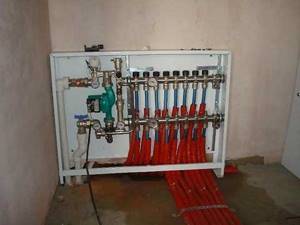
A prerequisite is the use of damper tape. It is laid along the external walls of the heated room. In this case, it is necessary that the height overlaps the thermal insulation and screed.
Then, the surface is covered with a multifoil layer or film and a reinforcing mesh is placed on it, to which the heating elements are fixed using small plastic clamps. In areas where pipes cross expansion joints, they are protected from mechanical stress by corrugation, which at the same time acts as thermal insulation.
System installation

If necessary, manifold cabinets are installed. They can be installed either immediately after installing the floor, or a little later. Starting with two-story buildings, installation of a ridge is required at each level.
The heating loop can be obtained using several schemes. The most common are “snake” and “spiral”. In the first type of circuit, the coolant is supplied in the direction from the outer wall, so in the initial sections the heat loss is higher than in the central sections. To correct uneven heating and compensate for heat loss, the spacing of the main lines along the perimeter of the external walls is chosen to be smaller.

The average pipe consumption is about 5 meters per square meter. In this case, installation is carried out adhering to certain rules. Thus, the length of the contour placed in increments of 200 mm cannot be more than 90 m.
On a note
When installing systems over large areas, several independent loops are laid.
Pressure testing works
After completing the laying of the pipeline, ridge and connection of the heating circuit, the system is checked for tightness and strength. To do this, the coolant is supplied under pressure, which should be slightly higher than the working pressure. It can be reduced by at most 0.02 MPa, provided that the temperature of the coolant remains unchanged. The minimum period for crimping is one day.
Warm floor as main heating
However, let us again remember the main phrase from the rule - “if possible.” The fact is that if you live in a very cold climate, where the temperature in winter often drops to minus 20-30 degrees, you should not completely abandon batteries.

In such frosts, it will not be possible to simply increase the temperature on the water floor coolant or raise it with the heating cable regulator.
Our sanitary standards limit the surface temperature of heated floors.
- for rooms with constant occupancy - 26 degrees
- with temporary stay – 31 degrees

The fact is that when this temperature rises above normal, convective heat flows begin to actively rise.
And they pull all the dust from below with them. Accordingly, a person who constantly lives under such conditions will eventually develop various respiratory diseases.
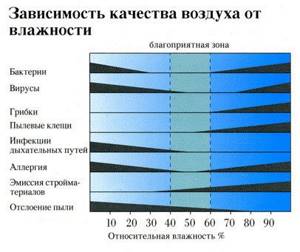
Of course, no one in your apartment or house can forbid you to set the temperature higher. Be it at least +40C, at least +70C.

But if your temperature only drops below minus 25C for a few days throughout the entire winter, then it’s not worth building radiators because of this. You can also increase the temperature of the floors during this time.
However, in addition to comfort, always remember about your health and the health of your loved ones.
And remember once and for all - the use of heated floors as the only and main source of heating is recommended only in energy-efficient houses and apartments, or in houses located in regions with a relatively temperate and warm climate.
Recommended Powers

A warm electric floor as the main heating copes with its task if it has the appropriate power. The calculation depends on the type of heating element:
- The heating cable parameter is linear power. On average it is 18 W/m. Knowing the value, it is easy to calculate how much cable is needed to heat 1 square meter. m.
- The indicator for a cable mat is power density. They produce products with a power of 150 W per 1 sq. m. Modifications with a power of 200 W are less common.
- Infrared films are more powerful - from 130 to 230 W/sq. m. They are more often used as the main heater.
- Rod mats produce power from 130 to 160 W per 1 sq. m.
The indicator is selected based on the purpose. In living rooms, floor heating with a power of 120 to 180 W/sq.m. is required for basic heating. m, for the bathroom – 120–150 W/sq. m, for a loggia - up to 230 W/sq. m.
Ceramic tile
Second rule
All areas with ceramic tiles must be heated.

This is due to the high thermal conductivity of the tile itself. If you put your hand on any board in your apartment, it will seem a little warm to you.
And if you place your palm against the metal door of a refrigerator or an unheated oven, you will feel a certain coolness.
However, their temperature will be absolutely the same - room temperature. Iron things always seem much cooler because they have higher thermal conductivity. That is, they transfer their temperature to your hand faster.

Thus, we exchange temperature with any object we come into contact with. However, you can warm up small objects and things - watches, clothes, a chain with your body, but you will never be able to warm up a layer of concrete with tiles.
On the one hand, the coolness from ceramic tiles seems slightly pleasant, but it all ends in illness.

Another important point is the following. Tiles are mainly laid not because they will last a long time, but because of their moisture resistance.

For example, it is placed in the hallway. Come in from the street with wet shoes and immediately put them on the tiles.
It's hard to imagine a bathroom without tiles on the floor. At the same time, you can safely spill water in it, without fear of subsequent swelling of this floor.
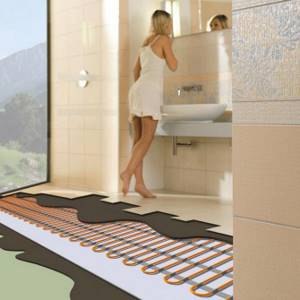
However, after you spill this water, you still have to clean it up. And in order to dry the bathroom, it is not enough to simply turn on the exhaust fan.

It also needs to be warmed up so that over time mold fungus does not grow on the walls.
Therefore, if you want to maintain your health and also use your finished floor for a long time without repairing it, be sure to think about forced heating.
